
views
Smoothing Your Skin
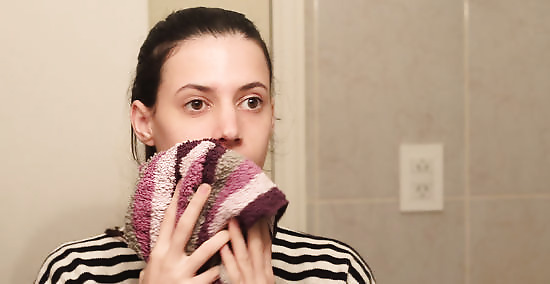
Cleanse and exfoliate your face. For your makeup to look flawless and airbrushed, you must start with smooth, clean skin. Use a mild exfoliating cleanser or scrub to ensure that your face is clean and any rough, dead skin is removed. Apply the exfoliator in a gentle, circular motion for the most effective exfoliation and rinse it well. Follow the instructions on your exfoliator's packaging to ensure that you use it properly. Don't scrub your face too roughly with the exfoliating cleanser or you may end up with red, irritated skin that will be more difficult to cover up. Pat your face with a clean towel after rinsing the cleanser to avoid irritating your skin.
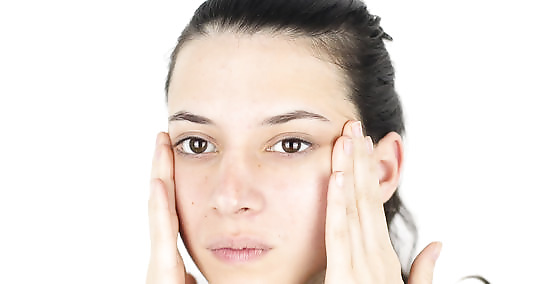
Moisturize your skin. To keep your skin looking smooth and supple, it's important to apply a moisturizer after you exfoliate. Use a lightweight formula that absorbs easily into the skin, though, so your makeup doesn't wind up looking cakey. If you have oily skin, choose an oil-free moisturizer to help keep your foundation and other face makeup from fading and melting off.

Apply a foundation primer. While moisturizer can help hydrate your skin to eliminate rough patches, you should still apply a primer before your foundation. It will fill in pores, fine lines, and wrinkles so you'll have a smooth, even canvas to apply the foundation to. Look for a primer with silicone in it for the smoothest finish. As with the moisturizer, choose an oil-free primer if you have oily skin. If you have dry skin, look a primer that says it is hydrating or moisturizing on the product. It will add even more moisture to your skin so your makeup won't cling to dry patches.
Getting Your Foundation Right
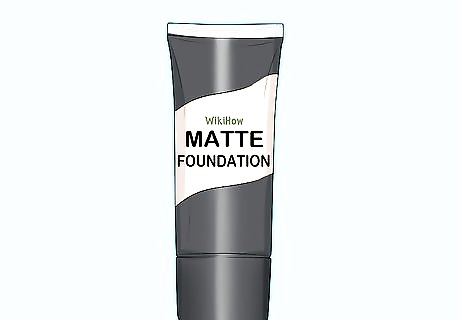
Choose a matte foundation. For an airbrushed finish, choosing the right foundation finish is key. A matte foundation is usually your best bet because it reflects less light, which makes pores less obvious and gives your skin a smoother look. It also cuts down on shine, so your makeup will look smooth and flawless as long as possible. If you have dry skin, you may prefer a demi-matte or satin finish foundation. That will help keep your skin from looking too dull or flat.
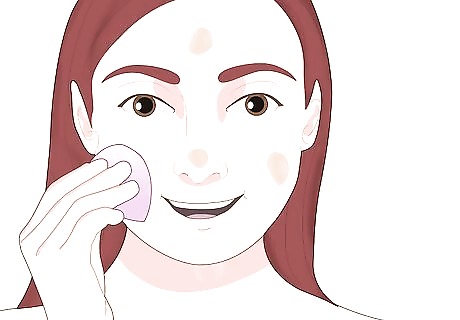
Select a foundation with medium coverage. For your skin to look airbrushed, you probably want all the discolorations and imperfections covered up. You'll be able to apply less foundation if you use one that offers at least medium coverage to even out your skin tone and cover up most flaws. Using a lighter layer of foundation will help keep your makeup from looking cakey or heavy. Remember—many of the airbrushed celebrities you see on the red carpet are using a lot less makeup than you think since they take a lot off during the blending process. If you have a lot of discoloration, scarring, or acne that you need to cover up, you may prefer using a full-coverage foundation. You won't need to apply as many layers or as much concealer if your foundation covers well.
Use a sponge to press the foundation into your skin. If you use your fingers to apply your foundation, you can wind up with streaks and patchiness. Instead, use an egg-shaped sponge to gently bounce the foundation onto your skin. That will help press it into your skin for a seamless, airbrushed look. Be sure to dampen your sponge with water before using it to apply your foundation. That keeps it from absorbing too much product and allows it to really diffuse the makeup for a flawless look. Use the sponge to apply the foundation in a light layer over your entire face, even areas that are fairly even and clear. You can bounce the sponge over problem areas a second or third time for extra coverage, though. When you've finished applying your foundation, roll the sponge over your face on its side. That will pick up any excess makeup so it doesn't look cakey. If you aren't a fan of makeup sponges, you can use a dense foundation brush to buff the foundation into the skin. Just make sure to blend well to avoid streaks and achieve a smooth, even look. EXPERT TIP Daniel Vann Daniel Vann Licensed Aesthetician Daniel Vann is the Creative Director for Daredevil Cosmetics, a makeup studio in the Seattle Area. He has been working in the cosmetics industry for over 15 years and is currently a licensed aesthetician and makeup educator. Daniel Vann Daniel Vann Licensed Aesthetician Try big, soft brushes as an alternative to a makeup sponge. Makeup artist Daniel Vann recommends: "If you want your makeup to look airbrushed, use soft, fluffy brushes, rather than firm, flat brushes. Firmer brushes pack product on to give you full coverage, but fluffier brushes will dispense your foundation a little at a time, which gives you a softer look."
Perfecting Your Skin
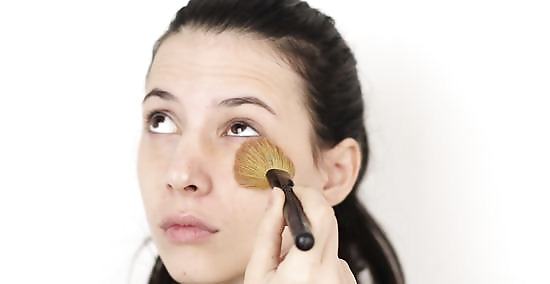
Apply a color corrector under the eyes. Obvious dark circles can spoil the look of flawless makeup. Using a peach or orange color corrector counteracts the blue tones in dark circles because blue and orange are opposites are the color wheel. Carefully pat the corrector under your eyes, and use your finger to gently blend it in. For fair and light skin tones, use a peach color corrector. For medium and dark skin tones, use an orange color corrector. The warmth of your finger helps blend the corrector more seamlessly into your skin than a brush does.
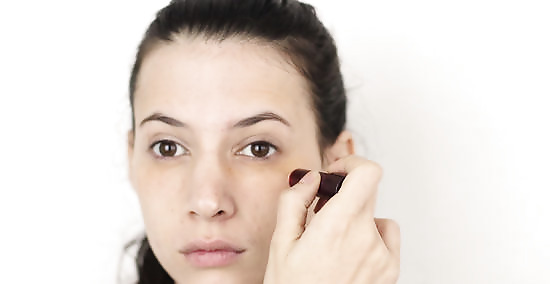
Dot concealer under the eyes and on blemishes and discolorations. Even with a medium coverage foundation, there may be spots on your face that show through the makeup. Use a concealer that matches your skin tone exactly, and apply it over the corrector under your eyes and on discolorations and blemishes. Use the same sponge that you used for your foundation to blend and press it into the skin for an airbrushed look. While the color corrector can cancel out the darkness under the eyes, its orange or peachy tone doesn't always blend completely into the skin. Adding the concealer on top helps camouflage it.
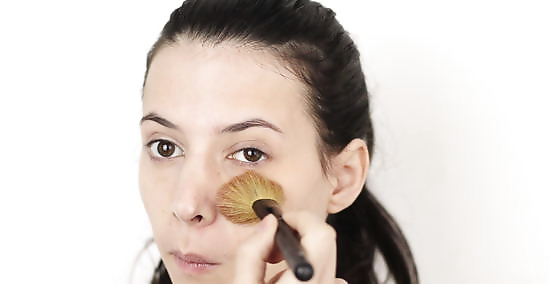
Dust a finishing powder over your face. When you've perfected your face makeup, you want to make sure that it looks airbrushed all day. A setting powder can help lock your foundation and concealer in place. Use a lightweight, translucent formula, and apply it with a large, fluffy brush that will deposit a light layer. If you have dry skin, you don't necessarily have to apply the powder all over your face. Dust it over any areas where you applied concealer and possibly your T-zone, or forehead, nose, and chin, which is most prone to getting shiny.
















Comments
0 comment